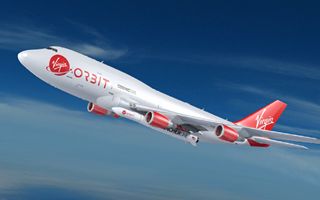Virgin Orbit’s Historic UK Launch Fails: What Went Wrong

The historic first attempt to launch satellites from British soil reached space last night but ultimately failed to reach its target orbit. It is therefore a failure for Virgin Orbit, the Virgin Group company aiming to become a service provider for launching small satellites into orbit. It was Virgin Orbit’s sixth mission to date and its second failure.
After successfully taking off from the runway at Spaceport Cornwall and traveling to the designated launch zone, the customized Boeing 747-400 serving as the LauncherOne system transport aircraft successfully released the rocket. The rocket then fired its engines and flight then continued through successful stage separation and second stage ignition. However, at some point during the ignition of the rocket’s second stage engine, the system experienced an anomaly, prematurely terminating the mission.
Virgin Orbit’s Launcher
One rockets are launched from the wing of a converted Boeing 747-400 called “Cosmic Girl”. Virgin Orbit’s aerial launch platform can take off from any runway long enough to handle a Boeing 747. By not relying on traditional spaceports that support vertical launches, this capability creates a new level of mobility for satellite launches, thus enabling sovereign launch capabilities into new markets.
Result is Disappointing
“Although this result is disappointing, launching a spacecraft always carries significant risks,” commented Matt Archer, director of commercial spaceflight at the UK Space Agency. horizontally at Spaceport Cornwall and we remain committed to becoming the leading provider of small commercial satellite launches in Europe by 2030, with vertical launches planned from Scotland.”
This article is originally published on borsaitaliana.it



